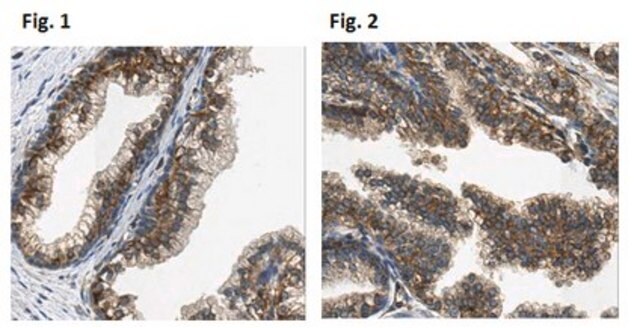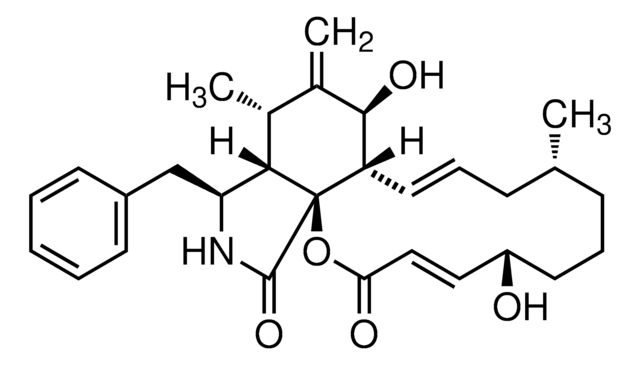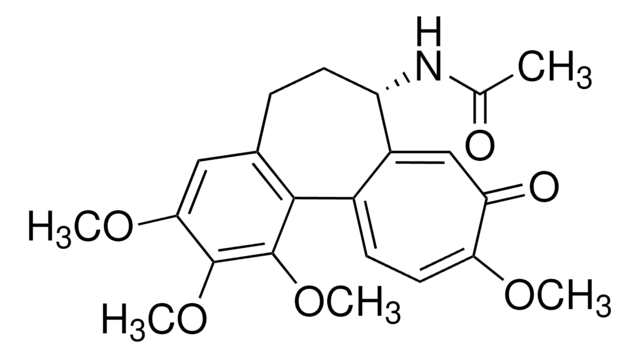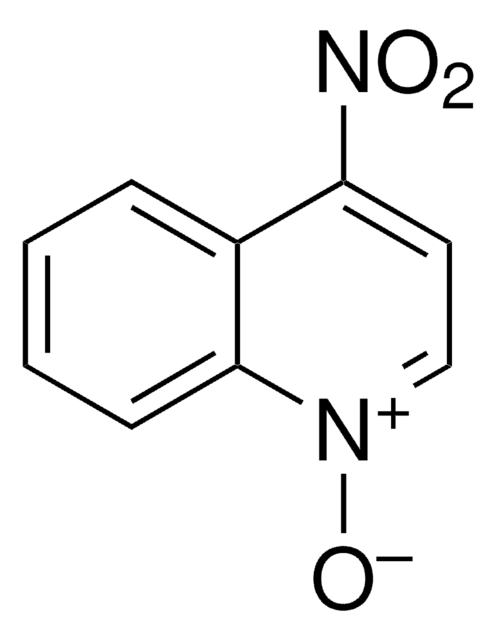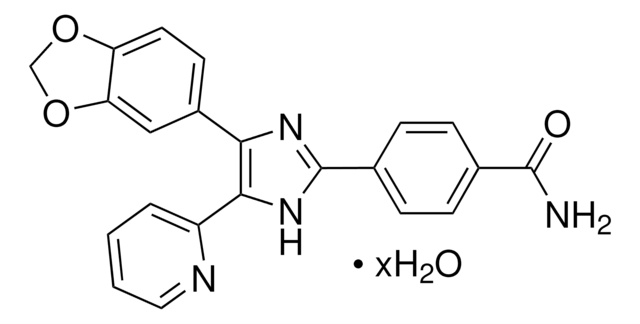M0440
Mitomicina C from Streptomyces caespitosus
meets USP testing specifications
Sinónimos:
Mitomycin
About This Item
Productos recomendados
origen biológico
Streptomyces caespitosus
Nivel de calidad
color
blue-violet
solubilidad
H2O: 40 mg/mL, clear to very slightly hazy, colorless
H2O: soluble
espectro de actividad antibiótica
Gram-negative bacteria
Gram-positive bacteria
Modo de acción
DNA synthesis | interferes
temp. de almacenamiento
2-8°C
cadena SMILES
[H][C@]12CN3C4=C([C@@H](COC(N)=O)[C@@]3(OC)[C@@]1([H])N2)C(=O)C(N)=C(C)C4=O
InChI
1S/C15H18N4O5/c1-5-9(16)12(21)8-6(4-24-14(17)22)15(23-2)13-7(18-13)3-19(15)10(8)11(5)20/h6-7,13,18H,3-4,16H2,1-2H3,(H2,17,22)/t6-,7+,13+,15-/m1/s1
Clave InChI
NWIBSHFKIJFRCO-WUDYKRTCSA-N
¿Está buscando productos similares? Visita Guía de comparación de productos
Descripción general
Aplicación
Acciones bioquímicas o fisiológicas
Espectro antimicrobiano: La mitomicina C tiene una fuerte actividad antitumoral, en especial contra las células tumorales de la ascitis de Ehrlich, y una fuerte acción bactericida contra las bacterias grampositivas y gramnegativas.
Precaución
Nota de preparación
Palabra de señalización
Danger
Frases de peligro
Consejos de prudencia
Clasificaciones de peligro
Acute Tox. 2 Oral - Carc. 2
Código de clase de almacenamiento
6.1A - Combustible acute toxic Cat. 1 and 2 / very toxic hazardous materials
Clase de riesgo para el agua (WGK)
WGK 3
Punto de inflamabilidad (°F)
Not applicable
Punto de inflamabilidad (°C)
Not applicable
Equipo de protección personal
Eyeshields, Faceshields, Gloves, type P3 (EN 143) respirator cartridges
Elija entre una de las versiones más recientes:
¿Ya tiene este producto?
Encuentre la documentación para los productos que ha comprado recientemente en la Biblioteca de documentos.
Los clientes también vieron
Nuestro equipo de científicos tiene experiencia en todas las áreas de investigación: Ciencias de la vida, Ciencia de los materiales, Síntesis química, Cromatografía, Analítica y muchas otras.
Póngase en contacto con el Servicio técnico



